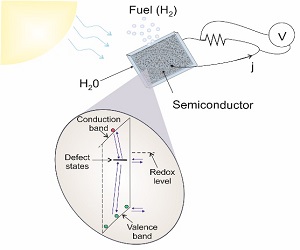
Luca Gael Bertoluzzi
Stanford University, USA
Title: Identifying electrochemical limitations of solar energy storage
Biography
Biography: Luca Gael Bertoluzzi
Abstract
Solar energy storage is achieved through the conversion of solar energy into a chemical fuel. Th is conversion is performed via at least one semiconductor material. One popular example is water splitting, which consists in splitting water into its primary components, hydrogen (which can be stored and used as a fuel) and oxygen. Water splitting occurs at the interface between the semiconductor and water via photo-activated electrochemical reactions. An effi cient light to chemical fuel conversion relies on the use of semiconductors with the appropriate optical properties, energetics, robustness and cost. To fulfi ll these criteria, cheap semiconductor oxides such as Fe2O3, TiO2, BiVO4 and WO3 have been investigated in the past decade.

The low temperature processing and deposition techniques of these materials induce the presence of a large density of defects. Th ese states strongly aff ect the kinetic of the electrochemical reactions which generate the solar fuel. While several solutions may be applied to tackle this type of limitation (coating layers, catalyst layers, surface defect passivation), it is primordial to identify, beforehand, the role of these defects on solar energy storage. In this talk, the modeling of the various possible impacts of defect states on solar fuel production will be discussed in a fi rst part. In the second part, it will be shown how frequency and time dependent electrochemical techniques such as impedance spectroscopy, light intensity modulated spectroscopy and photocurrent decays allow identifying these states. It will also be explained how to quantify their impact on the semiconductor energetics and the kinetics of the electrochemical reactions which generate the solar fuel. Finally, a general methodology will be proposed to choose the most appropriate technique for the optimization of this technology.

